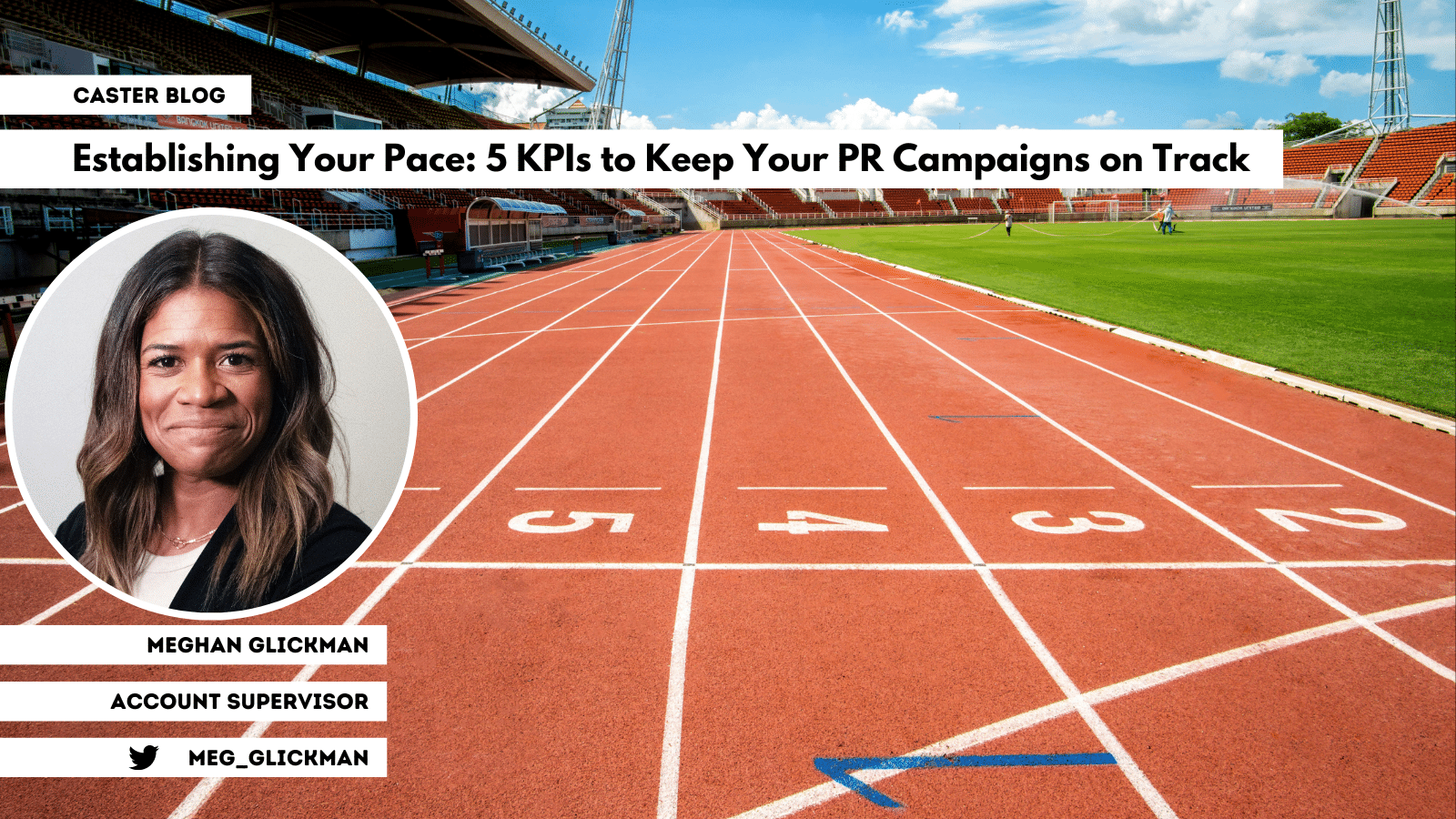
Establishing Your Pace: 5 KPIs to Keep Your PR Campaigns on Track
There are lots of ways to measure performance. Key performance indicators (KPIs) provide tangible evidence of the success of your campaigns and allow you to communicate the impact of your work. But which KPIs should you be tracking?
When we work with clients, we always make sure we are clear on their goals so we can establish exactly which KPIs we’ll track throughout the campaign. Each client’s media strategy is different which determines which KPIs are important. A company who is trying to establish a presence in a new market may need different KPIs than a company who is just launching. But in general, there are five main KPIs that will steer you in the right direction toward measuring the effectiveness of your campaigns.
KPI #1: Key Message Inclusion
When you’ve worked hard to develop your company’s messaging and the story you want to tell your audience, it’s important that the press get it right. Key message inclusion is a measure of the number of times your key messages are included in media coverage. Key message inclusion is an important KPI because it provides an indication of how effectively your key messages are being communicated to your target audience. On the flip side, you can also use this metric to shift direction or troubleshoot your messaging. If your original message isn’t resonating, perhaps one of the other sub messages is and that’s something your PR campaign can lean into.
KPI #2: Share of Voice
Nobody likes to be left out of the conversation. It’s our job to make sure our clients don’t read an article about their competitors with no mention of their company’s efforts.
Share of Voice is a measure of the amount of media coverage that your brand or message receives compared to your competitors. There are factors to consider when measuring your company’s Share of Voice, such as the reach of the publication. Your competitor may have many mentions in smaller publications, but if your company is mentioned with a higher-reach publication like the Wall Street Journal, that can increase your Share of Voice.
Another way to measure Share of Voice is through awards programs. Awards programs help our clients establish dominance in a market and stand out from their competitors.
KPI #3: Social Media Engagement
Establishing your social media presence doesn’t happen overnight. Once you’ve identified your audience and your messaging is aligned, now you can track whether or not your audience is interacting with your content.
Social media engagement is a measure of the level of interaction that your brand or message receives on social media platforms. This includes likes, mentions, comments, shares, and retweets. Social media engagement is an important KPI because it provides an indication of how your target audience is responding to your PR campaigns.
Your KPIs may vary across your social campaigns. For example, you may have a social media campaign around an upcoming product launch at a tradeshow where your company is exhibiting. For this type of campaign, your KPIs may be centered around the number of mentions your company has received across your social campaigns. Or maybe your company has just released a whitepaper or an eBook and you’re trying to tease your content across your social media channels – you can monitor the number of likes and comments to see which topics are resonating with audiences based on their platform of choice.
The KPIs you set should be different for each campaign and frequently finetuned. No one social media campaign is the same, but it is still essential to integrate social media into your core PR program to maximize your content.
KPI #4: SEO Performance
SEO performance is a measure of the visibility of your brand or message in search engine results. This includes the number of times your brand or message appears in search results and the ranking of your brand or message in search results. For a company who has recently launching or hasn’t generated significant media coverage yet, SEO performance may not be the KPI you’re focused on, but it’s still important to keep it in mind.
To track SEO performance, you can use tools like Google Analytics or SEMrush. These tools allow you to monitor your website’s search engine performance and track the number of times your brand or message appears in search results.
Media coverage can boost your company’s SEO performance, but optimizing your website to be SEO-friendly will also help. If you’re not sure where to begin with SEO, you can check out a few more tips from the Caster team here.
KPI #5: Media Impressions
Media impressions are a measure of the number of times your brand or message has been seen or heard in the media. This includes coverage in magazines, podcasts, online media, etc. Media impressions are an important KPI because they provide an indication of the reach of your PR campaigns.
It’s important to note that media impressions alone don’t provide a complete picture of the success of your PR campaign – other factors matter. However, it’s always fun to make a splash. Check out some of the ways we’ve helped clients generate media impressions.
Tools for tracking KPIs in PR campaigns
There are many tools available for tracking KPIs in PR campaigns: Cision, Meltwater, Meltwater, Hootsuite, Sprout Social, TrendKite, Google Analytics, SEMrush, etc. These tools allow you to monitor media coverage, social media engagement, share of voice, SEO performance, and key message inclusion. However, keeping up with multiple tools and tracking KPIs across platforms can be challenging and time-consuming.
At Caster, we have a full suite of tools used for tracking KPIs that we use for our clients. Our clients don’t have to spend time running reports or comparing metrics – we take care of that for them.
If you need help developing KPIs and figuring out how to achieve them, feel free to reach out. We’re here to help.
